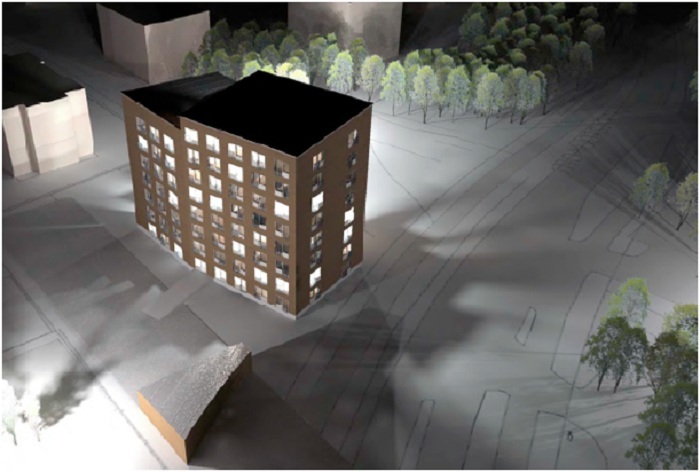Lapland’s first wooden high-rise project
The 8-storey house opens in 2019 in Rovaniemi
Published : 02 May 2018, 20:46
A project to construct a wooden apartment building in Rovaniemi is scheduled to be launched this June.
The eight-storey wooden structure will be built under a collaborative project led by the Domus Arctica-säätiö Foundation (DAS) in conjunction with the city of Rovaniemi, the University of Lapland, the Lapland University of Applied Sciences, and a number of local educational institutions.
The wooden apartment house will be the first of its kind in Rovaniemi as well as the entire Finnish Lapland. The project is slated to end by July 15 next year.
According to the project design, the building will offer new premises to DAS and the University of Lapland. “DAS wants to build a new block of flats for the students, while the University of Lapland wants some floor space to set up a science, arts and business hub,” said Rovaniemi’s City Architect Tarja Outila.
Outila said the wooden-framed building would be erected on the Jokiväylä campus between the University of Lapland and the Lapland University of Applied Sciences in the city’s Rantavitikka area.
In addition to establishing water sprinklers, the building’s outer surface will also have a layer of gray foam to boost its capacity to repel fire. And inside, said Outila, the building will have warm wooden ceilings and floors in every room and the stairwell.
Considering its rugged design and the entry doors having recesses highlighted in blue, Outila classified the high-rise’s architectural style as minimalistic. Each of the apartments in the building will come with a balcony and windows having disparate hues, said the architect.
With implementation of the project, DAS will be able to upgrade the existing housing context and add a new residential block, besides a shopping mall to the area. The ground floor of the projected building also includes a living room with five washing machines and facilities to dry utensils, in addition to a common space for the residents. The planned layout also has brought amendments to the car parking regulations allowing for use of the parking lot by both shared vehicles and the neighbours.
One of the project’s key aims is achieving the smallest carbon footprint possible by using timber as the main raw material. “Wood is a renewable, local, eco-friendly and sustainable material. Moreover, it absorbs carbon dioxide (CO2) from the environment in significant amounts,” explained Outila. “One cubic metre of timber holds one tonne of CO2. It is a hygroscopic material which attracts moisture from the surrounding atmosphere without losing its thermal insulation capacity.”
In addition to concrete structures, wooden structure has been a major goal of the Rovaniemi City’s building plan. “The manufacturing process of wooden products is less energy-intense,” pointed out Outila. She also added that wooden construction can help the Finns contain the rate of worsening of the climate change, as the impacts of climate change on the nature and livelihood in the Arctic are going to be particularly more dramatic.
The Finnish Innovation Fund (Sitra) and the Association of Finnish Local and Regional Authorities have made a honourable mention of the projected building plan during its tour to municipal cities for finding the most interesting rotational solutions in the country. It is considered the starting point for designing and building a rotational strategy for Rovaniemi’s sustainable development principles, innovations driven by digitalisation, and alternative energy sources.
DAS wants to be innovative in launching the first wooden building project in Rovaniemi. The city’s architect said, “Promoting wooden buildings in general and in Rovaniemi’s land-use plan are very much in line with the city’s building strategy.”
DAS Executive Director Saviaro Kirsti said the city’s plan for the Riihipellonpuisto area is also grounded on wooden buildings. She said DAS, too, aims at building healthy, comfortable, and energy-efficient houses and studios for students.
The Housing Finance and Development Centre of Finland (ARA), a financing organisation in Finland, is interested to finance wooden buildings, said the DAS executive director, adding that there will be solar panels on the roof, bicycles for common use, and may be electric car for common use.


